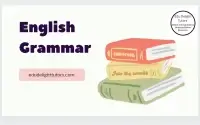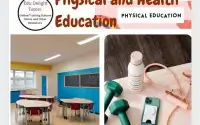Bones Basic Science and Technology Kindergarten Second Term Week 8
Lesson Plan: Bones
Subject: Basic Science and Technology
Class: Kindergarten
Term: Second Term
Week: 8
Age: 5 years
Topic: Bones
Sub-topic: Types and Importance of Bones
Duration: 40 Minutes
Behavioural Objectives
By the end of the lesson, pupils should be able to:
- Explain the meaning of bones.
- Identify and mention at least two types of bones in the body.
- Mention one way to prevent the breaking of bones (fractures).
Keywords
- Bones
- Skeleton
- Fracture
- Skull
- Rib cage
Set Induction
The teacher shows pupils a toy skeleton and asks them to guess what it represents.
Entry Behaviour
Pupils have seen pictures or models of skeletons in cartoons or books and have body parts they can relate to.
Learning Resources and Materials
- Toy skeleton
- Picture charts of the skeleton and bones
- Video clips showing bones and their importance
- Posters of different types of bones
Building Background/Connection to Prior Knowledge
The teacher asks pupils to point to parts of their body (e.g., arms, legs) and touch their teeth, explaining that all these are supported by bones.
Embedded Core Skills
- Critical Thinking and Problem-Solving
- Collaboration and Communication
Learning Materials
- Toy skeleton
- Lagos State Scheme of Work
- Picture and video resources on bones
Instructional Materials
- Picture chart of bones
- Video clips about skeletons
- Toy skeleton models
Content
Meaning of Bones
- Bones are hard parts inside the body that give it shape and support.
- Without bones, we would not be able to stand, walk, or move.
Types of Bones in the Body
- Skull: The bone that protects the brain.
- Rib Cage: The bones that protect the chest and lungs.
- Hand Bones: The bones in our fingers and hands.
- Leg Bones: The bones in our legs that help us walk.
Prevention of Fractures (Broken Bones)
- Play carefully and avoid rough games.
- Eat foods rich in calcium (like milk) to make bones strong.
- Always wear protective gear during sports (e.g., helmets, knee pads).
Examples of Bones
- Skull
- Rib Cage
- Teeth
- Hand Bones
- Leg Bones
Evaluation Questions
15 Fill-in-the-Blank Questions with Options
- Bones are the _____ parts inside the body.
(a) soft (b) hard (c) liquid (d) weak - The _____ protects the brain.
(a) rib cage (b) skull (c) hand bone (d) leg bone - The _____ protects the chest and lungs.
(a) leg bone (b) rib cage (c) skull (d) teeth - _____ are bones that help us walk.
(a) Rib cage (b) Leg bones (c) Skull (d) Teeth - Bones give the body _____.
(a) color (b) shape (c) food (d) air - Eating _____ makes bones strong.
(a) sweets (b) milk (c) water (d) rice - Playing rough games can cause _____.
(a) joy (b) fracture (c) growth (d) strength - The bones in the fingers are called _____.
(a) skull (b) rib cage (c) hand bones (d) leg bones - _____ are the hard parts inside the body.
(a) Bones (b) Skin (c) Teeth (d) Nails - We touch our _____ to feel our teeth.
(a) head (b) fingers (c) tongue (d) eyes - The skull is part of the _____.
(a) teeth (b) skeleton (c) rib cage (d) leg bones - A broken bone is called a _____.
(a) skull (b) rib (c) fracture (d) bone pain - Bones help us to _____.
(a) see (b) walk (c) eat (d) breathe - The _____ is a bone found in the head.
(a) rib cage (b) leg bone (c) skull (d) teeth - Touching parts of the skeleton helps us learn about _____.
(a) animals (b) bones (c) toys (d) plants
15 FAQs (Class Activity Discussion)
- What are bones?
Bones are the hard parts inside the body that give it shape and support. - What does the skull do?
The skull protects the brain. - Where is the rib cage found?
The rib cage is found in the chest. - What do bones help us do?
Bones help us stand, walk, and move. - What is a fracture?
A fracture is a broken bone. - What foods make bones strong?
Foods like milk and cheese make bones strong. - Can teeth be called bones?
Yes, teeth are part of the bones in the body. - Why should we play carefully?
To avoid breaking bones or getting fractures. - What protects the lungs?
The rib cage protects the lungs. - What does the skeleton do?
The skeleton supports the body and protects important organs. - What are leg bones used for?
Leg bones are used for walking and standing. - Why should we drink milk?
Milk makes bones strong because it contains calcium. - What is inside our body that helps us move?
Bones help us move. - What happens if we play rough?
Playing rough can cause fractures or injuries to our bones. - Why do we need to protect our bones?
To stay healthy and avoid pain or injuries.
10 Short-Answer Evaluation Questions
- What are bones?
- Mention two types of bones in the body.
- What does the skull protect?
- Write one way to prevent bone fractures.
- Name the bone that protects the lungs.
- Why are bones important?
- What is a fracture?
- Name one food that makes bones strong.
- What is the rib cage used for?
- Where can we find bones in our body?
Conclusion
The teacher marks pupils’ work, provides feedback, and emphasizes the importance of playing safely to protect bones.
SEO Elements
Captivating Title: Understanding Bones for Kids
Focus Keyphrase: Bones for Kindergarten
SEO Title: Understanding Bones: Fun and Interactive Lesson for Kindergarten
Slug: bones-kindergarten-lesson-plan
Meta Description: Learn about bones, types, and how to keep them safe in this fun and interactive Kindergarten lesson plan. Perfect for age 5.
Related
Related posts:
- Second Term Revision Basic Science and Technology Kindergarten Week 11
- Air and Breathing Basic Science and Technology Kindergarten Week 10
- Measurement Basic Science and Technology Kindergarten Second Term Week 9
- Body-Building Foods Basic Science and Technology Kindergarten Second Term Week 2
- Foods Basic Science and Technology Kindergarten Second Term Week 1
Related Posts

Letter Work Kindergarten Age 5 First Term Lesson Notes
Ikele ekele di iche iche Igbo Language Primary 1 First Term Lesson Notes Week 4

Mid Term Test Physical Development Kindergarten Age 5 First Term Lesson Notes Week 6
About The Author
Edu Delight Tutors
Am a dedicated educator with a passion for learning and a keen interest in technology. I believe that technology can revolutionize education and am committed to creating an online hub of knowledge, inspiration, and growth for both educators and students. Welcome to Edu Delight Tutors, where learning knows no boundaries.